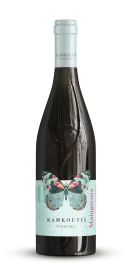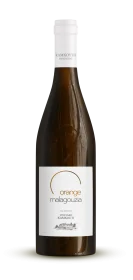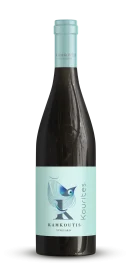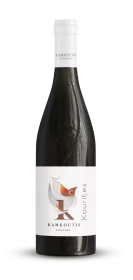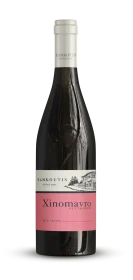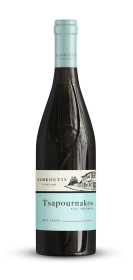Tο Ξινόμαυρο του Κτήματος Καμκούτη κατέκτησε την κορυφή
T ο Ξ ι ν ό μ α υ ρ ο τ ο υ Κ τ ή μ α τ ο ς Κ α μ κ ο ύ τ η κ α τ έ κ τ η σ ε τ η ν κ ο ρ υ φ ή
Στον 25ο Διαγωνισμό Οίνου Thessaloniki Wine & Spirits Trophy, το Ξινόμαυρο του Κτήματος Καμκούτη κατέκτησε την κορυφή. Το Xinomavro (Ξινόμαυρο), εσοδείας 2021, απέσπασε την Ειδική Διάκριση σε ξηρό μονοποικιλιακό οίνο, από την ομώνυμη ποικιλία, ενώ κατέκτησε και το Χρυσό Μετάλλιο (Gold Medal) 2025, καθώς βαθμολογήθηκε με 95.00/100.00.
Συνολικά, πέντε από τις έξι ετικέτες του κτήματος απέσπασαν διακρίσεις, με τον τοπικό Τσαπουρνάκο, εσοδείας 2021 και το ερυθρό Κουρίτες, εσοδείας 2020, να βραβεύονται με Αργυρό Μετάλλιο (Silver Medal), ενώ το λευκό Κουρίτες, εσοδείας 2024, και η Μαλαγουζιά 2024 του κτήματος, πλέον, θα μπορούν να φέρουν το σύμβολο του Χάλκινου Μεταλλίου (Bronze Medal).
Το Κτήμα Καμκούτη, ένα ανερχόμενο και ποιοτικό οινοποιείο, μας θυμίζει γιατί το Βελβεντό και οι αμπελώνες του, αξίζουν μια ιδιαίτερη θέση στον οινικό χάρτη της χώρας. Και το δικό τους «ευχαριστώ» στους κριτικούς και σε όλους όσοι απολαμβάνουν την παραγωγή τους, θα είναι πάντοτε, κλεισμένο μέσα στα μπουκάλια τους.
Ο Διεθνής Διαγωνισμός Thessaloniki Wine & Spirits Trophy 2025
Με πάθος για την τέχνη του οίνου και τη μαγεία της απόσταξης, ο διαγωνισμός Thessaloniki Wine & Spirits Trophy 2025 ανέδειξε για ακόμη μία χρονιά την αριστεία στον κόσμο του κρασιού και των αποσταγμάτων.
Τριάντα διακεκριμένοι γευσιγνώστες—Masters of Wine, Master Sommeliers, οινολόγοι, οινοχόοι και έγκριτοι δημοσιογράφοι οίνου—προερχόμενοι από την Ελλάδα και το εξωτερικό, συνεδρίασαν σε έξι επιτροπές και αξιολόγησαν 1.030 δείγματα από την Ελλάδα και την Κύπρο.
Τα κορυφαία κρασιά και αποστάγματα θα φέρουν πλέον το διακεκριμένο αυτοκόλλητο μετάλλιο, Χρυσό, Ασημένιο ή Χάλκινο.
Υπό την προεδρία του Master of Wine Κωνσταντίνου Λαζαράκη, ο θεσμός συνεχίζει να αποτελεί σημείο αναφοράς για την ποιότητα και την αυθεντικότητα του ελληνικού κρασιού. Ένα μπουκάλι με το σύμβολο του Λευκού Πύργου στη σφραγίδα του, δεν είναι απλώς μια επιλογή· είναι η εγγύηση πως κρατάτε στα χέρια σας ένα προϊόν που έχει κερδίσει την εκτίμηση των κορυφαίων του κλάδου.
Fermentation Process
Crushing is the process when gently squeezing the berries and breaking the skins to start to liberate the contents of the berries. Destemming is the process of removing the grapes from the rachis (the stem which holds the grapes). In traditional and smaller-scale wine making, the harvested grapes are sometimes crushed by trampling them barefoot or by the use of inexpensive small scale crushers.
These can also destem at the same time. However, in larger wineries, a mechanical crusher/destemmer is used. The decision about destemming is different for red and white wine making. Generally when making white wine the fruit is only crushed, the stems are then placed in the press with the berries. The presence of stems in the mix facilitates pressing by allowing juice to flow past flattened skins. These accumulate at the edge of the press.
On occasion, the winemaker may decide to leave them in if the grapes themselves contain less tannin than desired. This is more acceptable if the stems have ‘ripened’ and started to turn brown. If increased skin extraction is desired, a winemaker might choose to crush the grapes after destemming.
Wine is one of the most civilized things in the world and one of the most natural things of the world that has been brought to the greatest perfection, and it offers a greater range for enjoyment and appreciation than, possibly, any other purely sensory thing.
Ernest Hemingway Tweet
Removal of stems first means no stem tannin can be extracted. In these cases the grapes pass between two rollers which squeeze the grapes enough to separate the skin and pulp, but not so much as to cause excessive shearing or tearing of the skin tissues. In some cases, notably with “delicate” red varietals such as Pinot noir or Syrah, all or part of the grapes might be left uncrushed (called “whole berry”) to encourage the retention of fruity aromas through partial carbonic maceration.
The Grapes
The quality of the grapes determines the quality of the wine more than any other factor. Grape quality is affected by variety as well as weather during the growing season, soil minerals and acidity, time of harvest, and pruning method. The combination of these effects is often referred to as the grape’s terroir.
Grapes are usually harvested from the vineyard from early September until early November in the northern hemisphere, and mid February until early March in the southern hemisphere.
In some cool areas in the southern hemisphere, for example Tasmania, harvesting extends into May. The most common species of wine grape is Vitis Vinifera, which includes nearly all varieties of European origin. The most common species of wine grape is Vitis Vinifera, which includes nearly all varieties of European origin.
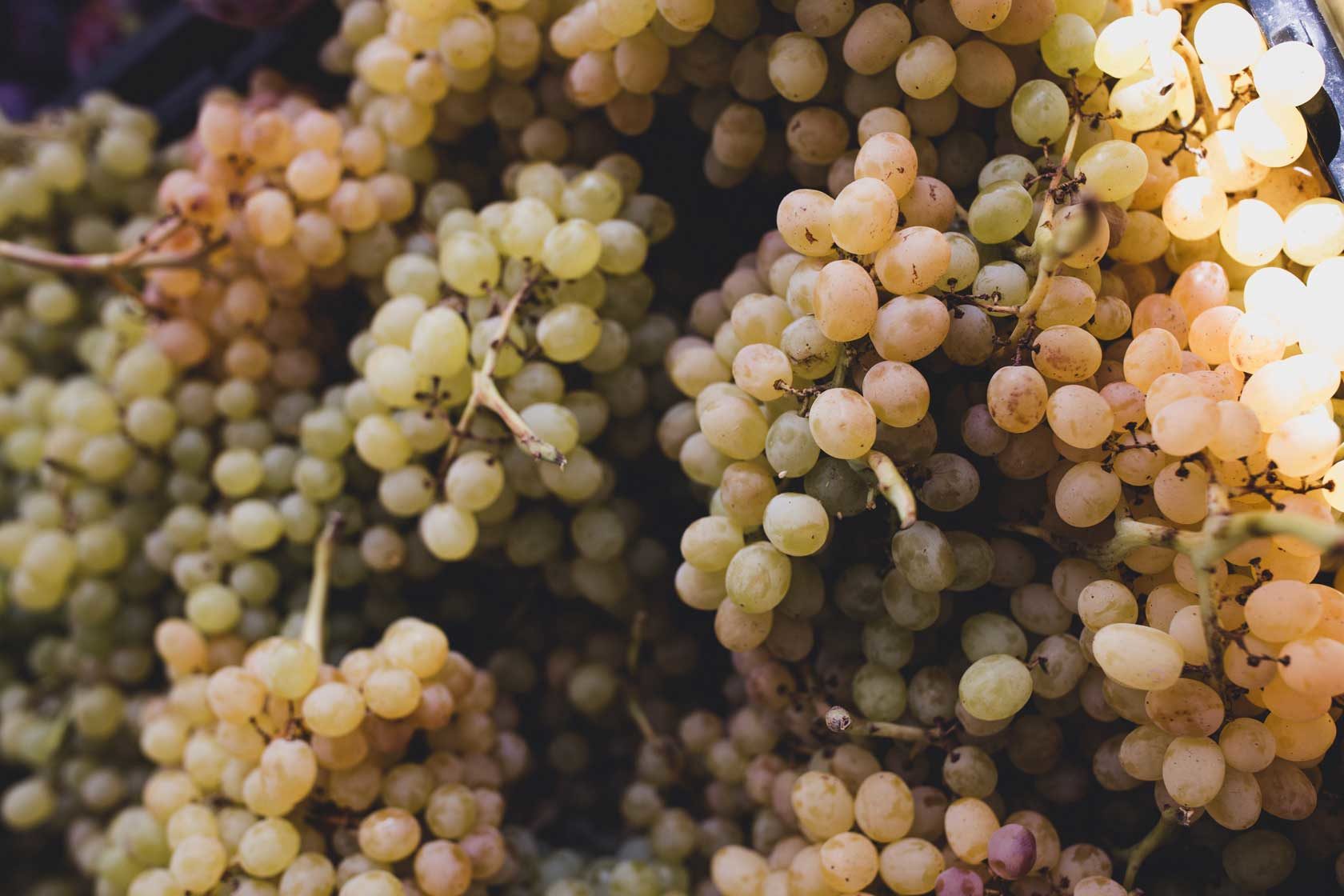
Manual harvesting is the hand-picking of grape clusters from the grapevines. In the United States, some grapes are picked into one- or two-ton bins for transport back to the winery. Manual harvesting has the advantage of using knowledgeable labor to not only pick the ripe clusters but also to leave behind the clusters that are not ripe or contain bunch rot or other defects. This can be an effective first line of defense to prevent inferior quality fruit from contaminating a lot or tank of wine.
Destemming is the process of separating stems from the grapes. Depending on the winemaking procedure, this process may be undertaken before crushing with the purpose of lowering the development of tannins and vegetal flavors in the resulting wine. Single berry harvesting, as is done with some German Trockenbeerenauslese, avoids this step altogether with the grapes being individually selected.
Crushing is the process when gently squeezing the berries and breaking the skins to start to liberate the contents of the berries. Destemming is the process of removing the grapes from the rachis (the stem which holds the grapes).
In traditional and smaller-scale wine making, the harvested grapes are sometimes crushed by trampling them barefoot or by the use of inexpensive small scale crushers. These can also destem at the same time. However, in larger wineries, a mechanical crusher/destemmer is used. The decision about destemming is different for red and white wine making. Generally when making white wine the fruit is only crushed, the stems are then placed in the press with the berries. The presence of stems in the mix facilitates pressing by allowing juice to flow past flattened skins.

Katerina Monroe
@katerinam • More Posts by Katerina
Congratulations on the award, it's well deserved! You guys definitely know what you're doing. Looking forward to my next visit to the winery!


